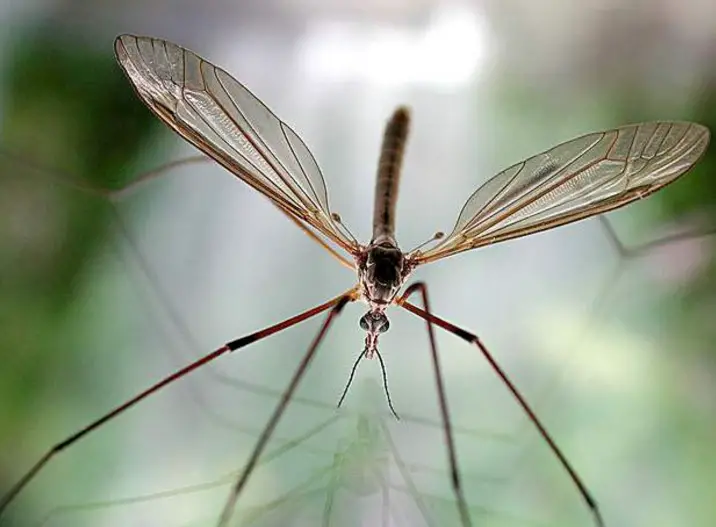The crane fly (Tipula abdominalis) is a group name applied to all those insects that belong to the family of Tipulidae. They are also called daddy-long-legs. Crane flies occupy nearly every continent except that some of the flies typically occur in the tropics. They are mostly most common in the northern altitudes. Crane flies are only slightly larger than the largest mosquitoes.
Crane Fly Facts
Anatomy
- The crane fly has a slender body and it is almost the size of a large mosquito. The wingspan averages 1.0 to 6.5 cm.
- There are 39 segments in the crane fly’s antennae.
- It reaches a length of about 7 – 35 mm and the insect has elongated wings and legs.
- Crane flies have brown to grey or yellow body. May flies show black body.
- The shape of the larva is typically cylindrical.
- The average lifespan of an adult crane fly is about 10 – 15 days.
Crane Fly Larvae Habitat
- Crane fly larvae are thought to make homes in a wide variety of habitats such as dry land, wet soil, freshwater, marine and brackish habitats.
- They have got a smooth abdomen which is lined with hairs. Some of the Tipulinae are likely to be found in decaying wood, wet cushions of liverworts, sodden logs, as well as wet mosses.

Diet
- The leaf-shedding crane fly typically feeds on hickory, American chestnut leaves, and maple. The fly also eats white oak, red oak leaves, and American beech.
- Larvae crane fly is known to feed all winter while in spring they take rest.
Predators of Larvae
- Insects
- Spiders
- Birds
- Mammals
- Amphibians
- Fish
Reproduction
- The adult female mates with a male soon after coming out of pupa and she got mature eggs within it. Male flies look out for the adult females either in the air or on the ground.
- A female deposits eggs sometimes on the algae but mostly on the wet soil. A few of them may lay eggs on the water surface.
- The larva known as ‘leatherjacket’ has a long slender body along with a tough brown skin. It is thought to consume only decaying plants, while others are entirely carnivorous, still others feed on the grass crops and cereal roots.






Leave a Reply